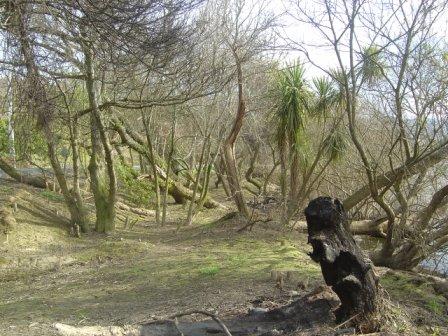
|
|
|
| Innovation Planting trials Planting under willows It has been noticed that in areas planted under willow trees, although there is less light available for the desirable plants, there is also less light for the weeds and that the desirable native plants are more tolerant than the herbaceous weeds (inkweed, nightshade, grasses, pampas) commonly found in the early stages of a restoration planting project. There is a suggestion that where appropriate, removing privet, honeysuckle and hawthorn and only the lower branches of the willow, may provide an environment more suitable for native trees and shrubs than for the weeds. A selection of ecosourced trees and shrubs was planted in September 2006 and are doing well. In this environment where herbaceous weeds are less vigorous it may be appropriate to plant more shade tolerant species like Coprosma grandifolia, C.lucida and mahoe, and less early colonizers like karamu. With weeds less of a problem there may be potential for less dense planting or smaller plants. Until the planting exceeds 2 metres ( the height of most weeds) the willows are an advantage There is still the issue of the remaining willows. There are three possible solutions:
 A 100m section of riverbank was cleared in the manner described, Tradescantia flumensis (wandering dew) was also removed by repeated applications of "GRAZON" over a year.
 A 100m section of riverbank was cleared in the manner described, Tradescantia flumensis (wandering dew) was also removed by repeated applications of "GRAZON" over a year.
|
|
Copyright © 2007Forest Flora |